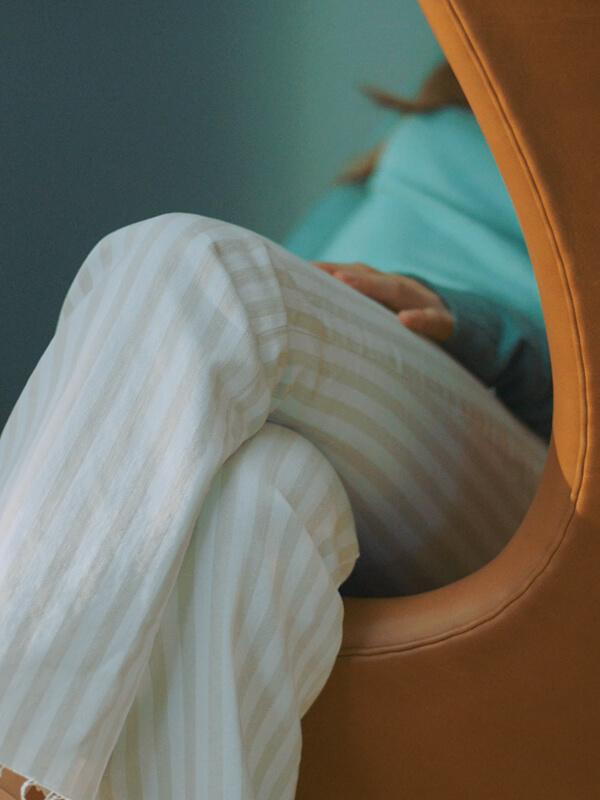Design icon: Fritz Hansen Egg chair
Great design is what we're all about here at Nest. We truly believe it has the power to bring joy to our homes and put smiles our faces - after all, who doesn't love to be surrounded by beautiful objects that make our lives that little bit easier?
For us, Arne Jacobsen's Egg Chair personifies great design in so many ways: it's stunningly sculptural, has bags of personality, provides exceptional comfort and, of course, has longevity. We explore the history and craftsmanship of this forever design in our latest article.
Making history
The Egg was originally designed in 1958 for the lobby of the SAS Royal Hotel in Copenhagen. The hotel was Jacobsen's largest commission to date and he designed everything in it, from the façade to the furniture, lighting and cutlery.
The Egg's curved shape was quite unusual for its time and it came about because of an equally unusual reason: Jacobsen wanted the interior of the hotel to be a direct contrast to the modernist exterior. The soft, organic lines of the Egg were to provide a refuge from the harsh glass and steel.
When it was first exhibited, the Egg became something of a landmark in modern furniture design as it was made using new materials and a new construction method - a foam shell covered by upholstery. This opened up a world of possibility for other designers at the time.
Craftsmanship in action
Fritz Hansen has been manufacturing Jacobsen's Egg chair since they were first released in the 1950s, right up to this day.
They're individually crafted by specialists at their Denmark factory, using only the finest quality materials.
Every single Egg Chair is stitched by hand using a distinctive wave method. Over 500 stitches are needed to perfect a fabric Egg Chair, while over 1,100 are required for a leather version. It's a time-consuming process, but it's this type of care and attention that give the chair it's premium look and feel.
Leather Egg Chairs have a timeless quality that simply cannot be replicated. You can see it, feel it and even smell it. They're made using only two, premium hides to ensure the leather won't be disrupted by seams or joins.
And because leather matures beautifully, a leather Egg Chair will only get better as it gets older. True heirloom pieces, they can be passed down from generation to generation, each time becoming more desirable than the last.
The mark of authenticity
Unfortunately, cheap imitation Egg Chairs have become more readily available in recent years, but the superior quality of a genuine Egg makes it very easy to spot the difference.
Genuine Fritz Hansen Egg Chairs have an immaculate finish and a smooth, taut surface made possible by hand-stitching the upholstery. If the fabric's loose, creased or puckered in any way, it's more than likely a fake.
As a response to the increasing number of imitation chairs, Fritz Hansen started issuing all authentic Eggs with a unique label that readily identifies them as genuine. Chairs made after 2006 will have a red label while chairs made after 2010 have a brown one.
Authentic Egg chairs also have a unique size. They stand at 107cm tall, measure 86cm wide and have a depth of 79cm (95cm when reclined). Anything other than this indicates the chair is a fake.
While the superior quality of a genuine Egg Chair is easy to see, the best way to be sure you're investing in a genuine Egg Chair is to purchase it from a reputable retailer, like Nest. We issue all of our Egg Chairs with a certificate of authenticity.
Share your thoughts on the Fritz Hansen Egg Chair with us on Twitter or Facebook.
Image Credit: Max Hawley.













